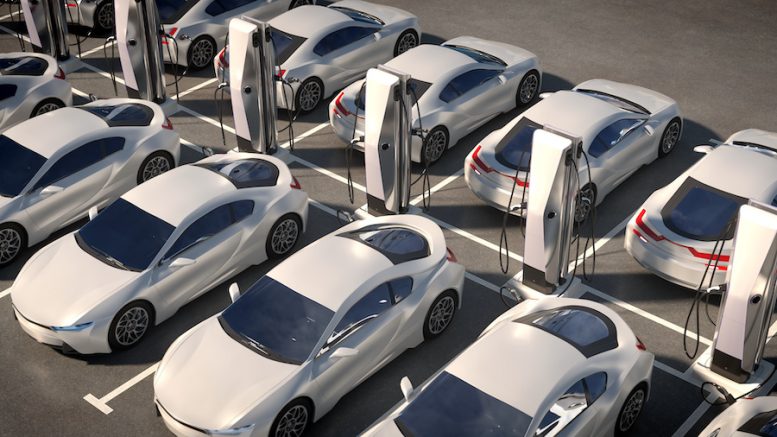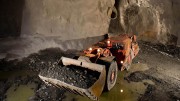When Elon Musk first announced Tesla’s move to LFP (lithium iron phosphate) batteries in February 2020, many were skeptical. LFP didn’t seem to fit with Tesla’s luxury and sporty carmaker image.
Back then, the cathode chemistry contributed less than 50 tonnes to overall battery metal demand, according to Toronto-based research consultants Adamas Intelligence, which tracks demand for EV batteries by chemistry, cell supplier and capacity in over 110 countries.
NCM (nickel-cobalt-manganese) and Tesla-Panasonic’s NCA (nickel-cobalt-aluminum) batteries dominated the market for electric cars at the time. The 50 tonnes of LFP batteries used were a fraction of the nearly 13,000 tonnes of lithium, graphite, nickel, manganese and cobalt that found their way into the batteries of electric passenger cars sold during that month four years ago.

LFP fares badly against ternary cathode batteries (NCM and NCA) in terms of energy and power density and therefore charging time and range. LFP’s cold weather performance is also significantly worse, but it’s hard to beat when it comes to cost, and has better thermal stability (as in not catching fire) and a longer lifespan.
But in just a few short years, LFP has come to dominate the EV market.
Battery metals demand from LFP has grown to 27,000 tonnes per month. LFP-NCM combo batteries, which are finding their way into more and more EVs, add another few hundred tonnes.
From just over 33% in 2019, nickel’s share of global active battery material demand has now fallen below 25%. From a nicely carved niche of 8% in 2019, cobalt clings on at less than 5% now. Manganese is down from almost 9% to 6%.
Nickel’s waning battery metal share comes despite the rapid adoption of nickel-rich chemistries for NCM batteries. Since lithium carbonate equivalent (LCE) tonnages and LCE prices are almost always quoted in industry literature it’s easy to forget that tonne for tonne, nickel is in fact the battery metal and on a 100% metal content basis total demand for cobalt and manganese is not that far behind lithium.
So how did LFP come to dominate the battery market?
Build your nickel, cobalt-free dreams
Musk had long voiced concern about nickel supply – once saying that he called up all the big mining CEOs to ask them to please make (sic) more nickel. Thrifting out cobalt was also a priority, with Musk saying publicly that Teslas were virtually cobalt-free while simultaneously inking offtakes with Glencore.
In 2020, LFP was associated with tiny and tinny city runabouts like the Wuling Hongguang Mini EV Macaron, end-mile delivery vans, buses and other special purpose vehicles.
Range then as now was a top concern for those looking to electrify and the Mini EV only managed around 100 miles in lab conditions. But the Mini EV surpassed the Tesla Model 3 as China’s bestselling EV in 2020. A sticker price of less than US$6,000 clinched it.
LFP received an even bigger boost in March 2020, when BYD “unsheathed to safeguard the world” its Blade batteries. The Shenzhen-based auto and battery manufacturer’s breakthrough technology compensated for the inherent energy density limitations of LFP by cramming more cells into battery packs.
BYD, which now sells one out of every five EVs around the world, has shifted its entire range to LFP.
During the first 10 months of 2023 LFP cornered 31% of the global EV battery market in GWh terms despite virtually zero LFP manufacturing capacity outside China. Nickel and cobalt containing batteries are now cut out of over half the Chinese market in GWh terms.
LFP is now also firmly in the driver’s seat at Tesla. The vast majority of newly sold Model 3s around the world this year have been LFP-powered. The cost advantage of LFP shrank considerably as lithium flirted with US$80,000 a tonne in 2022, but the decline has been swift since then, turning LFP cheap and cheerful again.
Blade runners
So what would a world look like without blade runners like BYD’s Dolphin, Seal, Han, Song and YangWang and Fangchengbao luxury and off-road brands? What if Tesla opted to employ NCM and NCA for all their vehicles? Or if the LFP cells supplied by CATL – the world’s biggest EV battery maker by a country mile – did not displace a third of its NCM output?
On an annual basis, potential nickel tonnes lost in 2023 is likely to top 107,000 tonnes. For cobalt, the metal that went unwanted because of LFP would be more than 38,000 tonnes or roughly 20% of global production last year. Producers of manganese for the battery supply chain would have enjoyed 58,000 tonnes greater annual demand.
Add tonnes lost to LFP to actual use for the year, and you get to 94,000 tonnes of cobalt demand from the EV sector. That’s more than half of cobalt mined each year ending up in the EV industry. For nickel that number is 375,000 tonnes and manganese 127,000 tonnes.
Adamas crunched the numbers on the basis of mid-market NCM 5-Series being the battery doing the work of LFP, not NCM 811. Under the latter scenario, the what-could’ve-been for nickel miners would naturally be even more eye-watering.
Also keep in mind the kilograms that end up in every EV are fractions of what would have been procured upstream.
A factor that is sometimes omitted from estimates of metal requirements is low yields in the conversion and manufacturing process.
CATL disclosed 50% yield in its factories early on, exacerbated by ramp up challenges, but even at a steady state the average cell producer turns as much as 30% of the metals entering factory gates into black mass. Between the mine mouth and the gigafactory, many more tonnes are never recovered.
Battery bulge
Despite the havoc wreaked by LFP, other trends are nickel and cobalt’s friends. The combined battery capacity of EVs sold last year surged by 45% year on year, according to Adamas data.
Battery capacity is a better gauge of metal demand than unit sales alone and not only are packs bulking up, the shift to high-nickel batteries has some way to go.
Last year, the sales-weighted average full EV – including LFP-powered units – sold globally contained just under 25 kg of nickel in its battery, 7% more than in 2022. The average battery in plug-in hybrids, which are soaring in popularity, particularly in China, had 6.4 kg of the devil’s copper, a 12% year on year jump.
The big battery bulge is also keeping cobalt weightings from falling more quickly amid ongoing thrifting. On average, full electric cars sold globally in 2023 contained 4.8 kg and plug-in hybrids 2.2 kg up 5% and 2%.
US, EU 2, Affordable Chinese EVs 0
Other developments that could keep the LFP wolf from the door on markets outside China a bit longer are geopolitics and a growing mercantilist approach to trade in the world’s largest economies.
While Chinese-made EVs have close to zero presence in the U.S., Europeans can and often do choose them over homegrown automakers.
The EU’s probe of Beijing’s subsidies to its EV industry is likely to result in tariffs and other measures to limit access to EU car markets while in the U.S. Meanwhile, long-awaited new rules on so-called foreign entities of concern (FEOC) all but eliminates direct Chinese involvement.
Next year in the U.S., EVs that contain any lithium, nickel, cobalt and graphite or other battery metals produced by, or which make their way through China, will not be eligible for the U.S. federal tax credit of up to US$7,500. Rare earths used in nearly 90% of all EV motors are already subject to IRA rules.
New guidelines may allow U.S. automakers to cut licensing and technology deals with Chinese companies. This should give a green light to ventures like Ford’s partnership with CATL for its LFP plant in Michigan, and Tesla’s venture in Texas with the Chinese behemoth.
Given Tesla and BYD’s success with LFP, U.S. automakers are bound to follow in their tracks.
FEOC FOMO
The new EV provisions pit automakers against mining firms, with the former arguing that barring China from directly participating in the U.S. mine-to-megawatt supply chain would be close to impossible given the short timelines and would delay EV adoption by Americans by pushing up costs.
The FEOC rules are intended to complement the IRA’s requirement that any EV subsidy is conditional on a percentage of all material inputs being sourced either domestically or from a U.S. free trade partner. Currently the threshold is 30% and will rise to 80% in 2027.
An exception was made for foreign subsidiaries of privately-owned Chinese companies in friendly countries, like Australia and Indonesia, but even these entities may fall afoul of the rules if they are deemed to be under the control of the Chinese government. Off-take agreements with Chinese buyers could also be deemed to bring too much CCP influence to bear.
The one-two punch by U.S. and European authorities may end up bringing the much talked about – and yearned for – premium pricing for metals and minerals supplied by Western firms. What it won’t do is make EVs cheaper or reignite sales growth in these markets.
Lithium, graphite could be next
The arrival of EVs has also exposed the industry to the vagaries of technological change like never before.
LFP has severely dented nickel and cobalt prospects and after all, metal pricing is all about the marginal tonnes. The next thing to come out of a lab could turn the mine that took decades to build into a white elephant. Substitution has and will keep miners awake at night.
It’s possible that sodium-ion batteries could do to lithium-ion what iron phosphate did to nickel and cobalt. Or sodium-ion or solid-state could threaten graphite’s seeming immunity to changes in battery chemistries.
This piece has been edited for length. Read the full version on Mining.com.






Be the first to comment on "How LFP batteries brought EV metal markets back to earth"